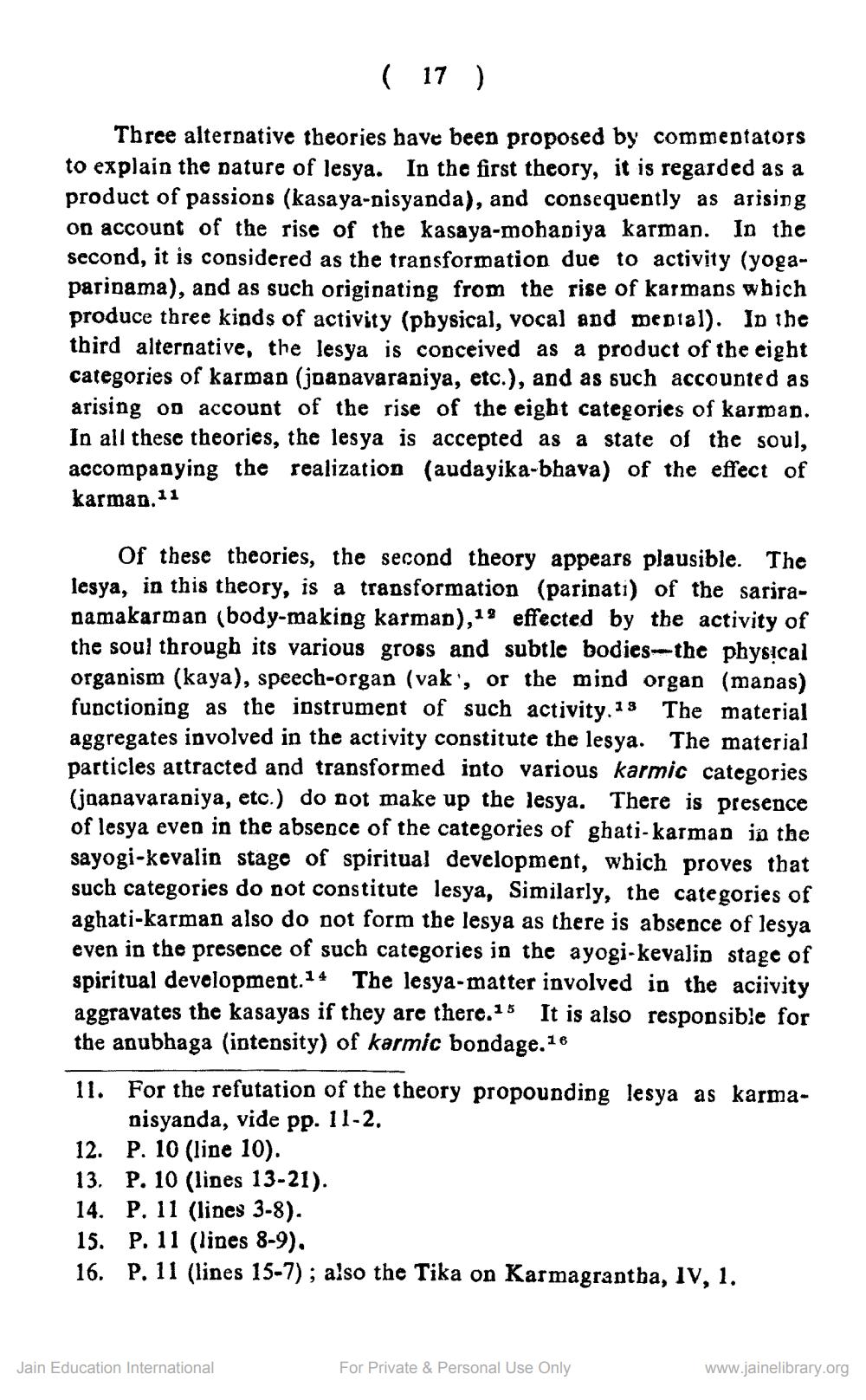________________
( 17 )
Three alternative theories have been proposed by commentators to explain the nature of lesya. In the first theory, it is regarded as a product of passions (kasaya-nisyanda), and consequently as arising on account of the rise of the kasaya-mohaniya karman. In the second, it is considered as the transformation due to activity (yogaparinama), and as such originating from the rise of karmans which produce three kinds of activity (physical, vocal and mental). In the third alternative, the lesya is conceived as a product of the eight categories of karman (jnanavaraniya, etc.), and as such accounted as arising on account of the rise of the eight categories of karman. In all these theories, the lesya is accepted as a state of the soul, accompanying the realization (audayika-bhava) of the effect of karman.11
Of these theories, the second theory appears plausible. The lesya, in this theory, is a transformation (parinati) of the sariranamakarman (body-making karman),12 effected by the activity of the soul through its various gross and subtle bodies-the physical organism (kaya), speech-organ (vak, or the mind organ (manas) functioning as the instrument of such activity. 13 The material aggregates involved in the activity constitute the lesya. The material particles attracted and transformed into various karmic categories (jnanavaraniya, etc.) do not make up the lesya. There is presence of lesya even in the absence of the categories of ghati-karman in the sayogi-kevalin stage of spiritual development, which proves that such categories do not constitute lesya, Similarly, the categories of aghati-karman also do not form the lesya as there is absence of lesya even in the presence of such categories in the ayogi-kevalin stage of spiritual development.14 The lesya-matter involved in the aciivity aggravates the kasayas if they are there.15 It is also responsible for the anubhaga (intensity) of karmic bondage.16
11. For the refutation of the theory propounding lesya as karmanisyanda, vide pp. 11-2.
12. P. 10 (line 10).
13. P. 10 (lines 13-21).
14. P. 11 (lines 3-8).
15. P. 11 (lines 8-9).
16. P. 11 (lines 15-7); also the Tika on Karmagrantha, IV, 1.
Jain Education International
For Private & Personal Use Only
www.jainelibrary.org




